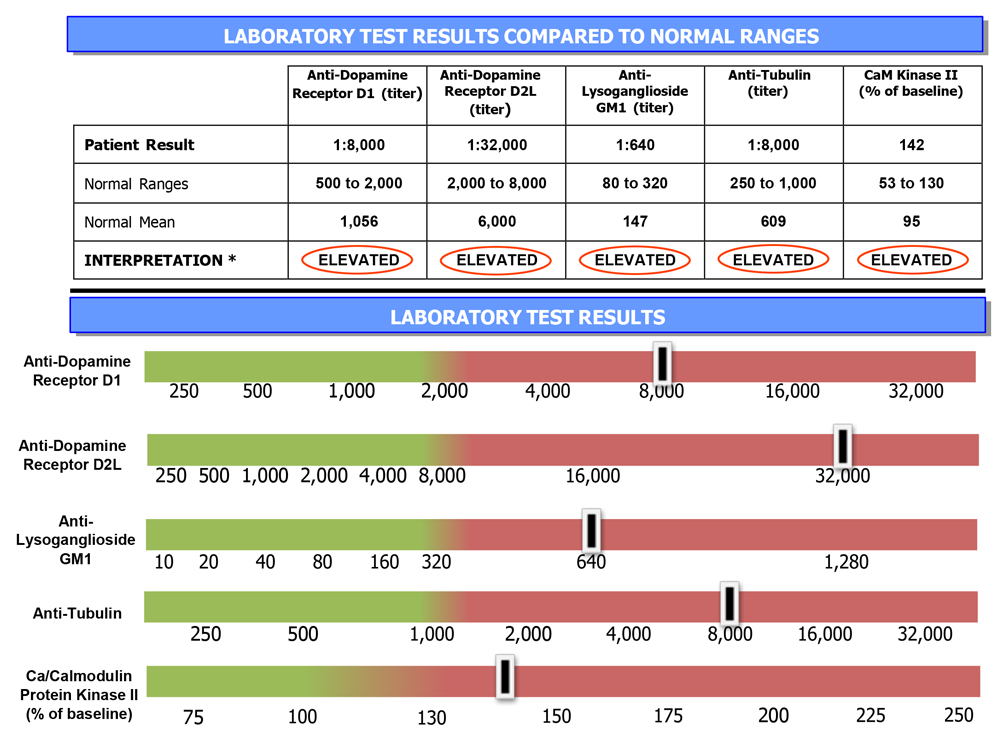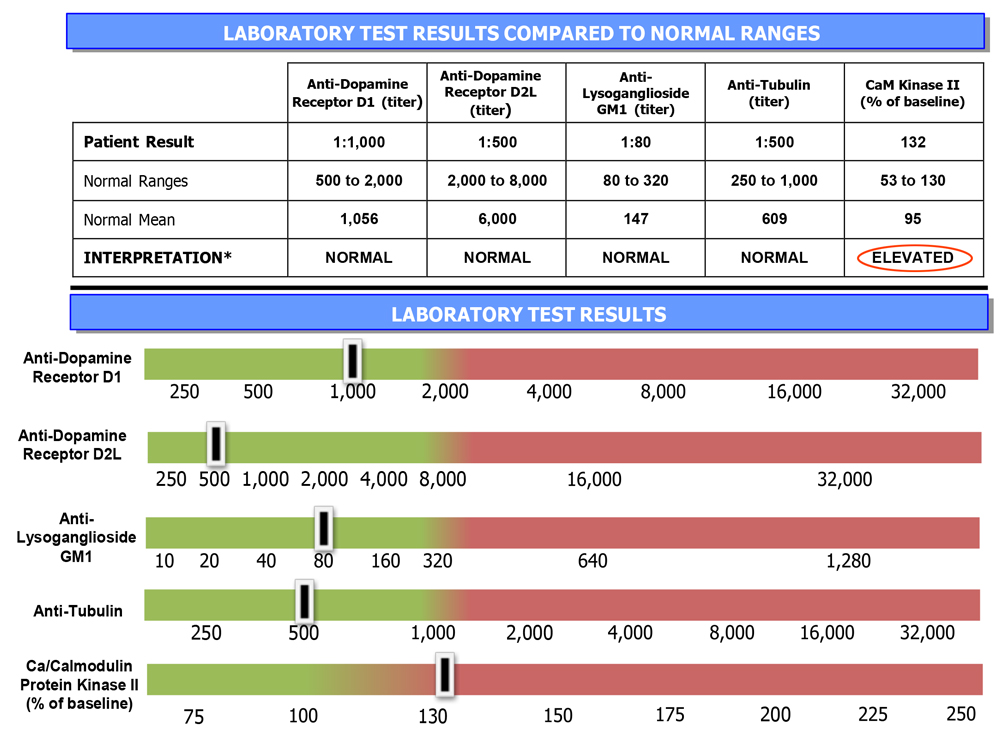Case Study #2
Presenting Symptoms: Poor concentration, lethargy, opsoclonus and other abnormal eye movements, sensory abnormalities, emotional lability, choreiform movements, delirium, ataxia, hallucinations, mutism, lost ability to recognize parents. Symptoms developed abruptly after repeated Strep and Mycoplasma infections.
Course of Illness: Relapsing and remitting, but at times, symptoms were continuous
Diagnosis: Seizures disorder
Previous Test Results: Sleep study showed central apnea
Medical History: 13 episodes of illness from Strep, Mycoplasma. Negative throat swab but ASO >400 (normal <200)
Family History: Positive for OCD and autoimmune disorders
Pre-Treatment Cunningham Panel™ results: Elevated anti-Dopamine D1 autoantibodies 8,000 (normal range 500-2,000); elevated anti-Dopamine D2L autoantibodies 32,000 (normal range 2,000-8,000); elevated anti-Lysoganglioside GM1 autoantibodies 640 (normal range 80-320); elevated anti-Tubulin autoantibodies 8,000 (normal range 250-1,000); elevated CaMKII 142 (normal range 53-130)
Treatment: IVIg X3 with slight improvement, followed by plasmapheresis X4, and rituximab (Rituxan)
Status: Complete resolution of symptoms. Patient now in 9th grade with 4.0 average.
Post-Treatment Cunningham Panel™ results: Normal anti-Dopamine D1 autoantibodies 1,000 (normal range 500-2,000); normal anti-Dopamine D2L autoantibodies 500 (normal range 2,000-8,000); normal anti-Lysoganglioside GM1 80 (normal range 80-320); normal anti-Tubulin autoantibodies 500 (normal range 250-1,000); elevated CaMKII 132 (normal range 53-130)
Anti-Dopamine D1 Receptor Autoantibodies — 8,000 (elevated)
Anti-Dopamine D2L Receptor Autoantibodies — 32,000 (elevated)
Anti-Lysoganglioside GM1 Autoantibodies — 640 (elevated)
Anti-Tubulin Autoantibodies — 8,000 (elevated)
CaMKinase II — 142 (elevated)
Anti-Dopamine D1 — 1,000 (normal)
Anti-Dopamine D2L — 500 (normal)
Anti-Lysoganglioside GM1 — 80 (normal)
Anti-Tubulin — 500 (borderline)
CaMKinase II — 132 (slightly elevated)
SUMMARY:
Patient symptoms consistent with elevated anti-D1 antibodies (emotional lability, hallucinations), elevated anti-D2 antibodies (choreiform movements, ataxia), elevated anti-Lysoganglioside antibodies (likely opsoclonus and other abnormal eye movements), elevated anti-Tubulin antibodies (lethargy and poor concentration), and elevated CaMKII (sensory abnormalities, delirium, mutism).

Symptoms resolved following administration of immunomodulatory/immunosuppressive agent rituximab (Rituxan).

Understanding Test Results
Fill out the form below to schedule your appointment.
Note: This service is open to individual clinicians and group practices only.
